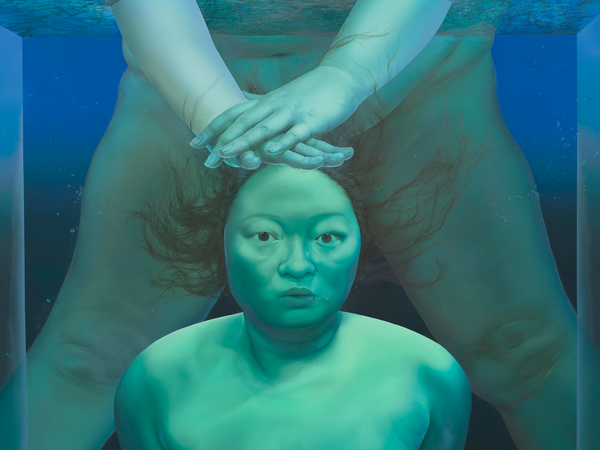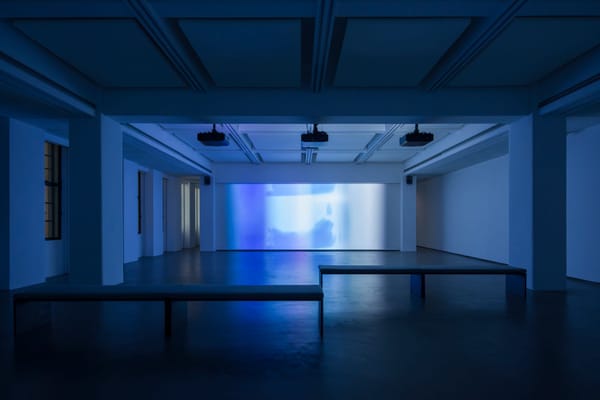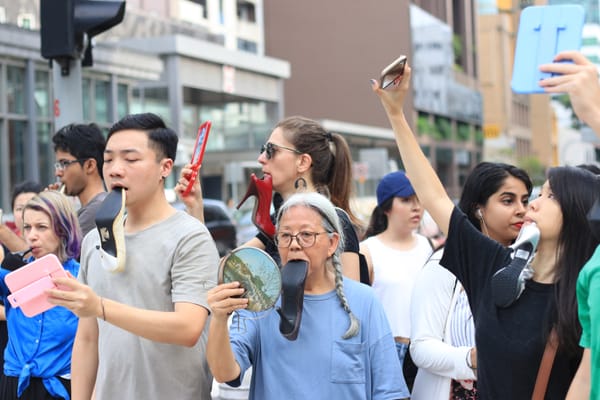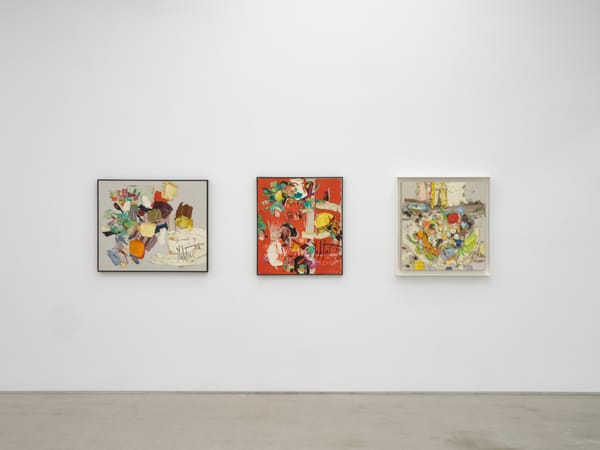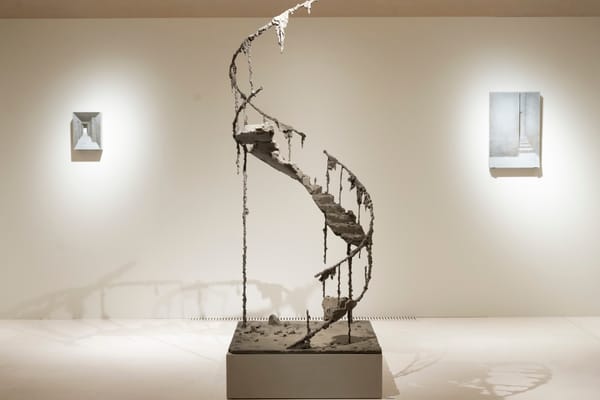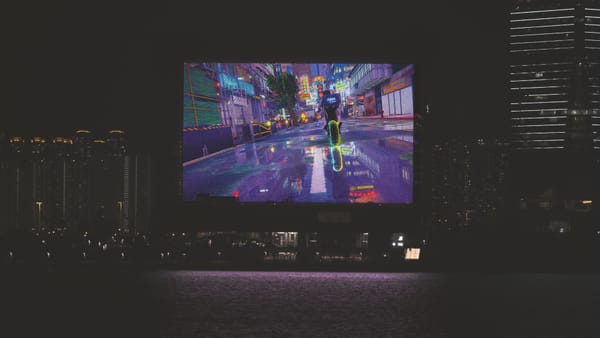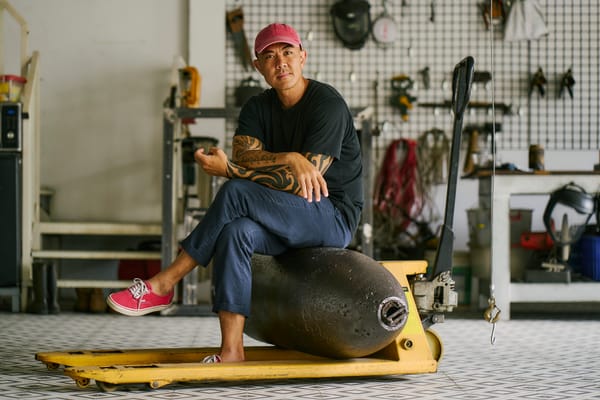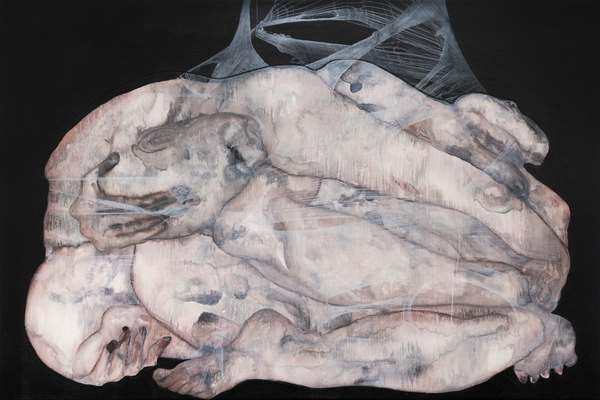Shows
Tang Yongxiang’s Becoming of Moderateness: Lifesc@pe Against Impermanence
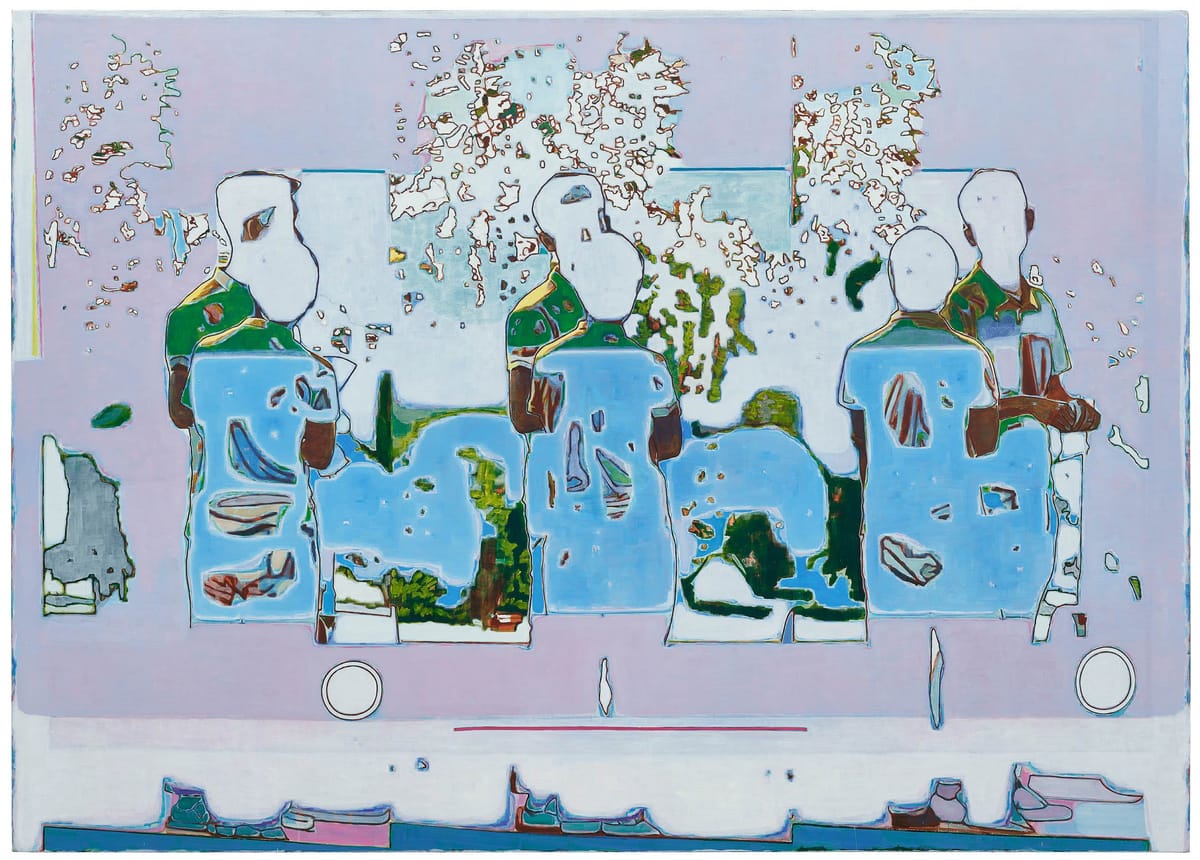
Text written by Chien-Hung Huang.
Tang Yongxiang’s latest solo exhibition, “People/Tree/Feet,” opens at TANK Shanghai, presenting works that extend the painterly methodology he established in 2012. His approach begins with spontaneous photographs snapped from everyday life, which become the imagistic substrate of his paintings. Through years of layered overpainting atop these same foundations, these resulting surfaces eventually signify “moderateness”—yet “moderateness” always whispers of “impermanence.” Contemporary China, as cinematically represented by sixth-generation domestic filmmakers, namely Jia Zhangke, Lou Ye, and Wang Xiaoshuai, aptly illuminates this conceptual polarity. Situated within landscapes that metamorphose at velocities beyond capture, individual, environment, and history have become thoroughly and mutually entangled and permeated. “Impermanence” thus arises as the defining condition of lifescape—the inseparable complication of innate nature and life (xing ming)—in post-1990s China. The pandemic has only escalated this circumstance, so much so that individuals are now forced to confront a planetary “impermanence” reconfigured by a volatile global supply chain. Paradoxically enough, it is precisely against this backdrop that the very “moderateness” has hence acquired unprecedented significance: as a practice of cultivating one’s lifescape.
Tang Yongxiang’s lifesc@pe intuition1 is a cultivation practice untethered from worldly spectacles. As a quiet forerunner, or a contemplative secular practitioner who remains actively engaged with the social realm, he approaches painting as a world unto itself, where he maps out his creative development and experiential topography. For those who attempt to comprehend reality through trans-specific and planetary scales, confronting the impermanence that arches across multiple dimensions becomes inevitable. Only by retreating one step—from image creator to observer—can one perceive or discern the “moderateness” dwelling within one’s own proximity; This step requires a de-thinking of all preconceived ideas. One must decelerate the velocity of one’s hands, along with the various apparatuses connecting hand, eye, and voice. Only through such measures can the practitioner remain embedded within networks of trans-specific and trans-planetary relations. Simultaneously, as the act of viewing occurs increasingly through imaging machines, our visual culture is being thrusted into the era of Mechanosphere, or “engrammatic cognition,” characterized by either excessive overload of images or the internalization of “engrammatic intuition.” Our relationship with the world can no longer be determined by linear connections implied by “optical” reflection, but must instead be architectured through intuition enabled by “folding back” toward reality after amassing vast image collections.
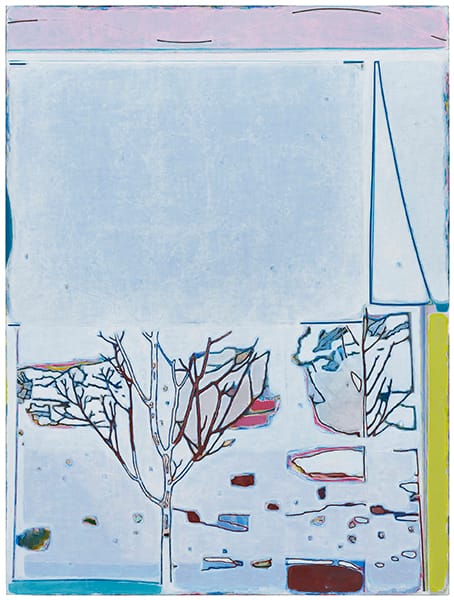
For these reasons, the “moderateness” is a “folding back” process initiated when we confront “impermanence.” We must fold back to avoid being devoured by impermanence, or losing our way among the delusions camouflaged as solutions. This “folding back,” initiated in reality with the intent of returning to a renewed reality, bears resemblance to the moment Bhagavat articulates in the Diamond Sutra, “Hence the Tathâgata is to be seen from no-signs as signs.” So, for painting, how does it find its proper role in our contemporary moment to connect authentically with our lives? When Tang Yongxiang fixes his gaze upon an apple, or finds companionship with a neighborhood tree while practicing posture (gong) or taking a walk, both gestures achieve an egalitarian symbiosis with things and beings through the state of “folding back.” “Moderateness” hence transforms into a verb denoting acts of cultivation and operation.
His painting operates as this process of operating (cultivating) the “folding back to moderateness.” In this sense, it seeks to render visible not only the “folding back” that departs from superficial landscape but also “moderateness” as such. The work penetrates reality’s non-linear space while making a regression back toward states of “non-intention.” Therefore, we can understand the image as a dialogue process that accommodates these mental dynamics. Throughout this process, techniques including compositional framing, chromatic adjustment, color field configuration, flat painting application, and vertical layering all seem to materially engage the image. They fold back the processed and inhabited image, calibrating it against proprioception and internalizing such interiority. His painting thereby forms a process in which one engages in a dialogue with image through visual conduits. This is not mimetic reproduction of discrete objects or phenomena, but experiential field where dialogue and interaction achieve actualization.

We feel the imperatives to fold back toward “moderateness” and return to “non-intention” precisely because we have forfeited “everydayness” itself! Over half a century, contemporary art’s exploitation of the everyday has unfortunately culminated in the latter’s standardization and commodification—not unlike the “nowness” we perpetually lose to computational algorithms and big data analytics. Tang Yongxiang’s painting presents primarily an exploratory process granting freedom both to machines and to selfhood. How does one access “cyborgian” creativity amidst equipment ungoverned by subjective control and techniques unhijacked by professional orthodoxy? The answer resides at the convergence of liberated machines and free will. This convergence activates an “experiential becoming” so that we can bear witness to how the artist re-thinks information and phenomena through color blocks and contours, how he interfaces with machines via experience to generate what might be termed the “non non-human” cyborgs. “Moderateness” exceeds mere existential or lifestyle conditions; it constitutes a “compatible place” where humans, as both biological species and cyborgian assemblage, retain agency and cognitive capacity amid the confluence of world and machine. Let us refuse reduction to biofuel for artificial intelligence; let us, through personal experience and intuition, evolve into cyborgs infused with vital life force—the lifesc@pe intuition (moderateness) weathering through impermanence.
NOTES:
1 T/N: Lifesc@pe is a term derived from lifescape, the coined concept of one’s inner nature and life as developed in Daoist philosophy. The stylization here is inspired by the title of exhibition “Trans-Justice: Para-Colonial@Technology” at Museum of Contemporary Art, Taipei, which aims to debunk the prescribed binary framework of “justice/injustice” or “colonizer/the colonized” in a world where rapid flows of information and the volatile state of democracy have rendered any dominant role in constant flux. Whoever assumes dominance is constantly changing. Meanwhile, what persists is dominance itself. This stylization suggests a fluid state of power relationship realized in the new phase of technological development and machine agency.
